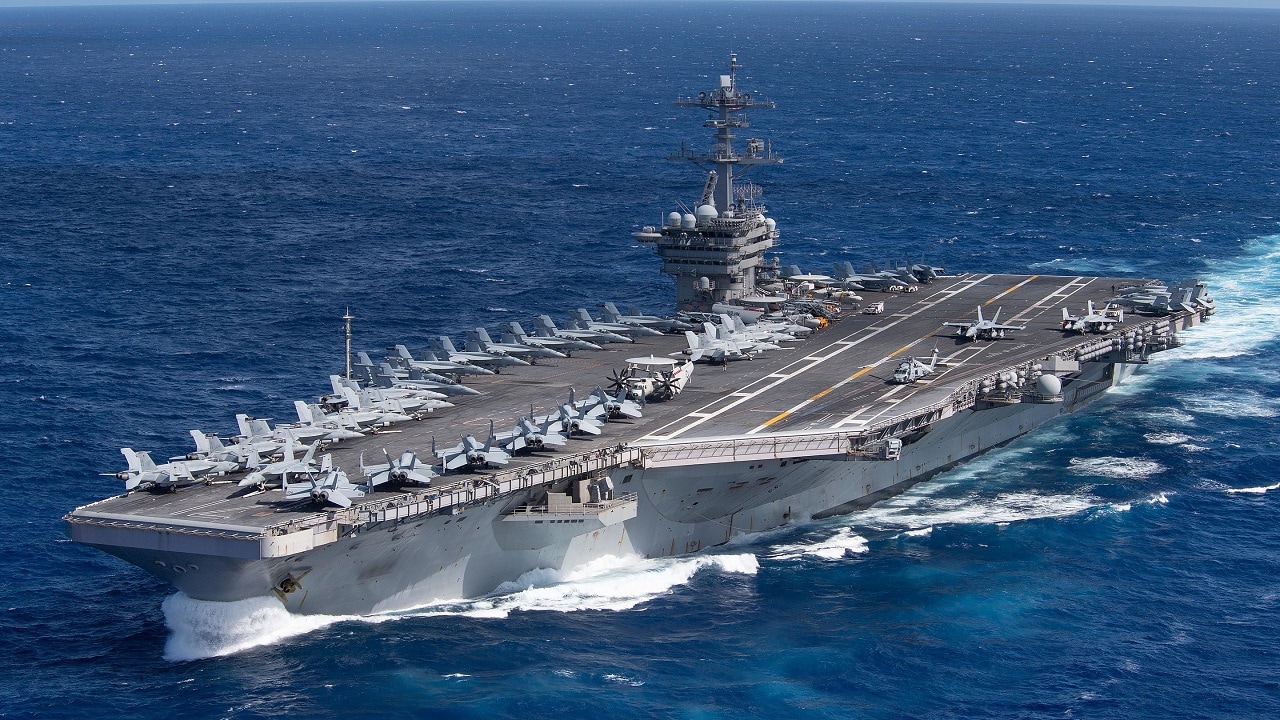The Chinese Navy has big dreams to be just like the US Navy with a fleet of aircraft carriers: You know that China wants a sizable force of aircraft carriers and yearns to have a blue water navy that could easily steam into the Indian Ocean and the Persian Gulf. This capability could better establish protection of its sea lanes for trade and commerce outside the East and South China Seas, plus secure energy supplies for the coming decades.
What if it built and deployed a nuclear-powered carrier that could sail around the world, just like the US Navy? That is the goal of the People’s Liberation Army Navy (PLAN).
The PLAN’s Aircraft Carrier Program
China is meeting its aircraft carrier program objectives and milestones. It currently has two working carriers – the indigenously rebuilt Liaoning and the home-built Shandong. The PLAN is also constructing a third carrier. None of them are nuclear-powered, but the PLAN is ever confident regarding its shipbuilding prowess and wants to build a fourth carrier with nuclear propulsion.
Chinese Carriers Are Getting Better
The Chinese are showing that they can assemble carrier strike groups led by the Liaoning and deploy into waters that could become flashpoints in a naval conflict with the United States. They are now able to launch and arrest airplanes day or night. A recent task force returned to China at the end of 2021 after operating in the Yellow Sea, East China Sea, and the Western Pacific. This shows the Chinese are serious about modern carrier operations.
Join the French and Americans
Nuclear-powered aircraft carriers are in service only with the Americans and French. So, the Chinese could be projecting power with the best of them someday. Nuclear-powered ships can be on the go for 20 years without a refit and re-fueling, while sometimes serving for 50 years.
This planned ship would likely be called the Type 004, at least in the beginning. The aircraft carrier would perhaps have a system that will enable electromagnetic launch catapults – a significant development – only the U.S. Navy’s Ford-class has this feature. The carrier could deploy up to 100 aircraft, including the J-15 or the J-20 fighters and airborne early warning and control aircraft, plus anti-submarine warfare planes.
China’s Nuclear Powered Aircraft Carrier Dream: What We Know
As usual the Chinese are being cagey about announcing their plans for nuclear-powered flat-tops. The Chinese know that nuclear-powered warship aspirations will be a long and uncertain path. Last year, the South China Morning Post said the fourth carrier has already lived through two years of delays and it is unknown how long adding nuclear propulsion would take.
“Shipbuilders and ship propulsion engineers are keen on making a significant breakthrough with the construction of the fourth carrier,” a source in the Chinese defense ministry said. “It will be a technological leap for the shipbuilding industry … but construction may take longer than for its sister ship due to the different propulsion systems.”
It’s Not Easy Going Nuclear
What does a nuclear-powered carrier take to build? Exorbitant amounts of time and money.
Examine the journey of the USS Gerald R. Ford, America’s new supercarrier. The Ford has already endured a long path to success. It was authorized to be built in 2008. Construction took almost four years. Then it was commissioned in 2013. It needed testing dockside for 3.5-years, while the nuclear reactors were loaded, and sea trials were executed. This process cost the navy $13.3 billion. The Ford is still undergoing shock trials as of 2021.
Since the Chinese have no experience with nuclear-powered ships, they may not be ready for such a commitment. But keeping up with the U.S. Navy is a strategic concern. Just saying the words, “nuclear-powered aircraft carrier” is music to the ears of the PLAN.
Can They Really Build It Soon?

